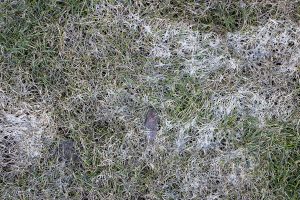 Following a season with dry air, frigid temperatures, and heavy snowfall, it’s no surprise these conditions can have a lasting toll on your landscape. After winter, we can’t wait to get out in the yard and soak up the warmer weather, but oftentimes, your lawn and garden need to recover from the snow and ice. Fortunately, many of these issues are easy to fix. Let’s discuss a few of the most common landscape problems after winter and how you can spur on the recovery process.
Following a season with dry air, frigid temperatures, and heavy snowfall, it’s no surprise these conditions can have a lasting toll on your landscape. After winter, we can’t wait to get out in the yard and soak up the warmer weather, but oftentimes, your lawn and garden need to recover from the snow and ice. Fortunately, many of these issues are easy to fix. Let’s discuss a few of the most common landscape problems after winter and how you can spur on the recovery process.
1. Post-Winter Drainage Issues
Melting snow or heavy rain can saturate your lawn, and the water can pool into puddles or mud patches in your landscape beds or low-lying property. This buildup of surface water is a clear indication of poor drainage, which can result in flooding, property erosion, and foundation damage. Fortunately, there are many drainage solutions you can choose to install, including site grading, French drains, trench drains, and dry creeks.
2. Pink and Gray Snow Mold
There are two types of snow mold: pink and gray. Pink snow is characterized by a patch of white mold on your grass surrounded by a thick, pinkish border. It typically goes away on its own when exposed to sunlight, but you can hasten the process by mowing the affected blades of grass. Though it’s easier to remove than gray snow mold, it causes more damage by killing the roots and crowns of grass. Gray snow mold generally appears in areas subject to long periods of snow coverage. While it typically doesn’t kill grass, it is unsightly. It can be removed with a fungicide or by avoiding late-fall applications of fertilizer.
3. Landscape Salt Damage
Hiring an experienced snow and ice removal service will ensure your property is protected throughout winter. Nevertheless, even when being careful with salt and snowmelt, road runoff can cause salt to contaminate your soil, negatively impacting its structure, permeability, and aeration and sapping spring roots from much-needed water. To repair the parts of your lawn damaged by salt, you can overseed the area to promote growth. Otherwise, using an eco-friendly deicer can avoid this issue in the future.
Fortunately, the most common landscape problems after winter can be solved using several methods. If you’ve noticed your landscape has been hit particularly hard by this winter so far, we here at Dolan Landscaping have nearly three decades of experience tackling New England winters and their accompanying issues. If you’re interested in finding someone to maintain your landscape and mitigate the common damages caused by snow and ice removal, don’t hesitate to contact us today.